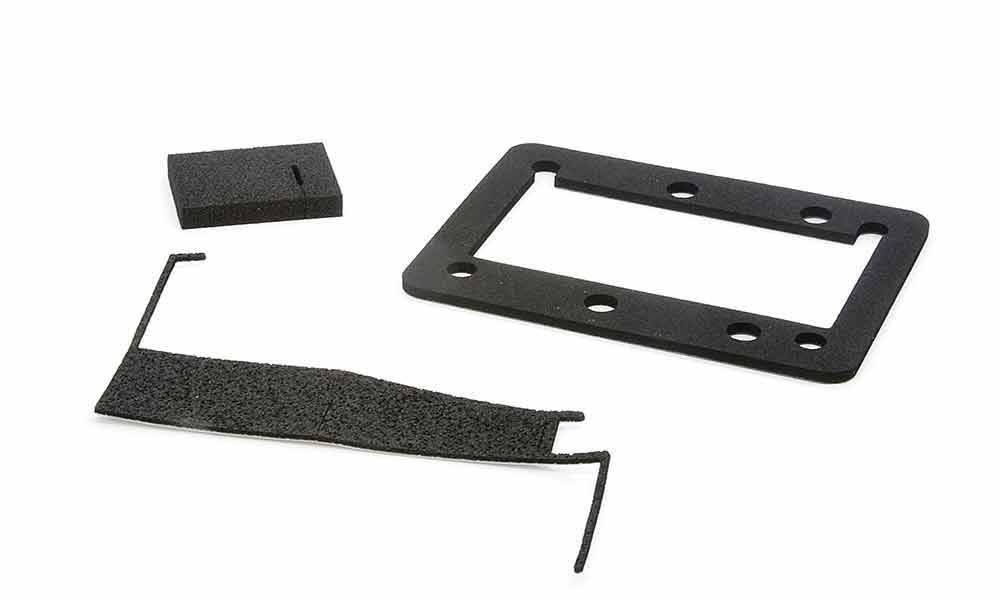Material
Closed Cell Sponge
Organic cellular sponge rubber for a variety of general purpose applications without stringent environmental, sealing, or temperature requirements
Organic cellular sponge rubber for a variety of general purpose applications without stringent environmental, sealing, or temperature requirements

Constant deflection of closed cell sponge rubber may cause the gas to permeate through the cell walls. Over compression of the closed cell sponge such as beyond 50 – 70% deflection, may cause the cells to burst. When a closed cell sponge gasket has been over compressed, the gasket may rebound very slowly, or not at all, compromising the integrity of the gasket. Most closed cell sponge gaskets should be deflected 20 – 35% for optimal sealing performance. These properties are discussed in ASTM D1056, ASTM D6576 and Mil-R-6130C.
Although Stockwell Elastomerics’ closed cell sponge rubber business frequently involves silicone sponge rubber, there are many situations where non-silicone closed cell sponge rubber is more appropriate. The following is a rundown of the closed cell sponge / expanded rubber gasket materials most frequently used by Stockwell Elastomerics in service to customers. Visit the Closed Cell Rubber / Neoprene Data Sheets page for detailed technical information on these expanded rubber materials.
Produced from 100% neoprene polymer, most closed cell neoprene sponge products meet UL 94HF-1 flame rating. They are generally serviceable from -40°F to 158°F continuous and withstand 200°F intermittently. Premium closed cell neoprene sponge products will resist light oil contact, ozone, alkalis and acids, making them a good choice for general enclosure door gaskets.
Produced from a blend of neoprene, EPDM and SBR, these grades are the most frequently supplied for general purpose sponge gaskets. If a commercial closed cell neoprene sponge gasket is requested, this would likely be supplied. These products also normally meet UL 94HF-1 and will take -70°F without cracking due to cold embrittlement. The oil resistance will not be as good as on the 100% neoprene sponge products.
Closed cell EPDM sponge materials will not meet the UL flame rating without additives and they will not withstand oils or fuels. However, they will stand up to outdoor conditions such as water, ozone and indirect sunlight better than neoprene.
These closed cell ECH sponge materials are often specified for under-the-hood automotive gasket applications due to their ability to handle continuous temperatures of 300°F and some light oil and fuel contact. ECH also has very good resistance to weather, ozone, sunlight and oxidation.
These blends of closed cell sponge are versatile, having a temperature range of -40°F to 180°F, and availability in 50 foot continuous rolls for gasketing. Certain Ensolite products have flame ratings of UL 94V-0 and UL 94HF-1 depending on thickness. They tend to have slightly lower density than most closed cell sponge products, and the water absorption properties are slightly higher than closed cell neoprenes.
Contact Us for further assistance with closed cell sponge rubber / expanded rubber materials including closed cell neoprene, closed cell blended, closed cell EPDM, closed cell epichlorohydrin sponge rubber and Ensolite vinyl nitrile / neoprene.